These 5 Simple Surfing Steps Will Help You Ride Your First Wave
From the seaside or your TV tuned into the Olympics, you’ve little question watched surfers using waves and thought, “Now that would be fun.” But really doing it—attending to the most effective surf locations and up on a board is a complete different intimidating matter. How do you time the waves excellent? How have you learnt when it’s your flip to catch one which’s rolling in? Plus, what gear do it is advisable to get started? These are just some of the urgent questions newcomers have when venturing out into the waves with a surfboard. Our five-step, expert-led primer on easy methods to surf is simply what newbies (or rippers of all ranges) must get started or take it to the subsequent stage.
The great thing about browsing is that no two days on the water are the identical. Wind, swells, and tide can all have an effect on surf circumstances, so that you could be a continuous scholar. If you’re breaking into the game, or it has been ages because you’ve caught a wave, it’s an excellent concept to enroll in a surf lesson.
With wave swimming pools turning into a serious development throughout the U.S., a fast search will result in browsing applications which may be nearer than you suppose, even for those who’re not a simple commute to Malibu or Cocoa Beach. Whether you are on the shore or a surf facility, a strong teacher will help you learn to time the waves and even push you into your first one, so you may really feel the fun and construct some momentum. After you achieve some confidence, going out with associates or extra skilled surfers will allow you to stage up.
Related: 10 Best Wave Pools Worldwide for Stellar Surfing on Demand
Be affected person. It can take at the least two or three classes earlier than you pop up and journey your first wave—and a number of other extra earlier than you’re able to get out on the water by yourself, says Stephen “Cruz” Morales, founding father of Encinatas, CA-based Buenas Olas Surf School.
To break down easy methods to get started browsing, we gathered tips from specialists within the sport, together with professional surfer and filmmaker Hunter Jones (see video above). Also weighing in is Jono Halstead, a lead surf teacher at Everyday California, a San Diego, CA-based Ocean Adventure Company.
From the bottom guidelines of surf etiquette to catching your first wave, right here’s easy methods to get started browsing.
Men’s Journal goals to function solely the most effective services. We replace when attainable, however offers expire and costs can change. If you purchase one thing by way of one among our hyperlinks, we could earn a fee.
Courtesy picture
Step 1: Learn Ocean Safety and Surf Etiquette
When you’re new to the game, analysis beginner-friendly surf spots on-line, advises Halstead. The Surfline app supplies useful insights in regards to the friendliness of areas and applicable ability ranges required for numerous breaks. “Beginner-friendly spots typically have a welcoming vibe, and the surfers in the water are often willing to help teach you the ropes,” he says.
Learn about rip currents, tides, and test the surf forecast earlier than heading out within the water, he provides. You may name or pop into a neighborhood surf store to get the news. You may must postpone if there’s been a heavy rainstorm, as a result of city runoff can improve water air pollution.
Those who’re new to the game ought to watch the water earlier than paddling out to ensure they’re comfy with particular varieties of breaks and waves sizes. Morales recommends one- to three-foot waves for newcomers.
When you do get within the water, do the “stingray shuffle” to keep away from stepping on the underwater creatures and getting stung, Morales says, who has additionally traveled as a non-public surf information to assist purchasers discover different international locations.
Before you be a part of a surf lineup (the queue of surfers ready to catch waves), grasp the artwork of controlling your board. “If you’re not confident in your ability to manage your board in the water, practice paddling and maneuvering in a calm, empty spot of the water first to avoid being a hazard to others,” Halstead says.
Once you’re within the surf lineup, give option to extra superior surfers. If it’s your flip to catch a wave, they’ll typically encourage you to go for it. “It’s often helpful to introduce yourself and mention you’re new to the sport,” Halstead says.
A golden rule: “It’s one surfer per wave,” Jones explains. The proper of means is given to the person who’s closest to the place the wave is breaking. “Snaking” is if you minimize forward of somebody, and also you gained’t make any new associates by doing this.
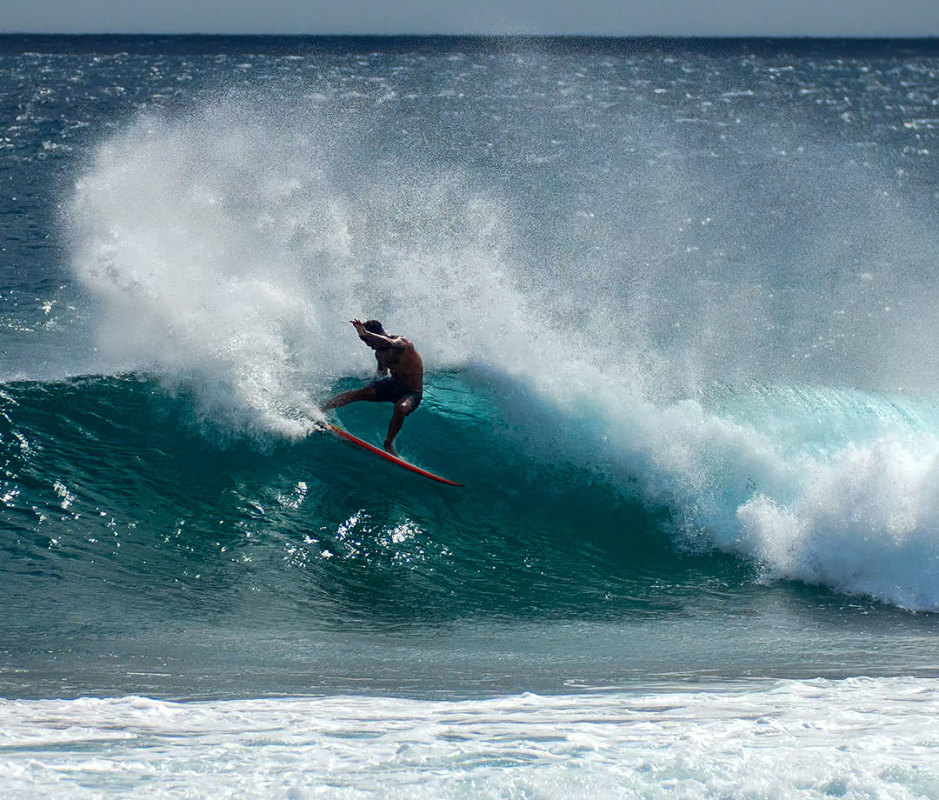
Courtesy picture
Step 2: Master the Language of Surfing
The extra time you spend within the water and round different surfers, the extra lingo you’ll choose up. Here’s a handful of phrases your teacher may introduce you to throughout your first surf lesson, and price realizing earlier than you catch your first wave.
Regular vs. Goofy Foot
Regular foot surfers journey with their left foot ahead, whereas goofy foot surfers journey with their proper foot ahead.
Surfboard Parts
Get to know the anatomy of your surfboard.
- Fins are connected on the underside of your board and assist management and steer the board.
- The nostril is the board’s entrance tip and the tail is the again a part of your board—which come in numerous shapes that may issue into velocity and management.
- A leash attaches to the surfboard deck close to the tail and your ankle, stopping you from shedding your board throughout a wipeout.
- Surfboard rails are the sides of the board, running from the nostril to the fin, affecting issues like turning, stability, and velocity.
Types of Boards
- Foamies (soft-top boards) and longboards are nice for newcomers as a result of they’re wider, longer, and extra steady, notes Jones. They’re those to seize for easy rides and to excellent your pop-ups.
- Shortboards maneuver higher and are constructed for velocity and methods, however require extra superior expertise .
Ocean Terms
Impact zone is the place a wave first breaks. Whitewash is the damaged white water of a wave that’s shifting in the direction of the shore—and nice for newcomers to be taught on.
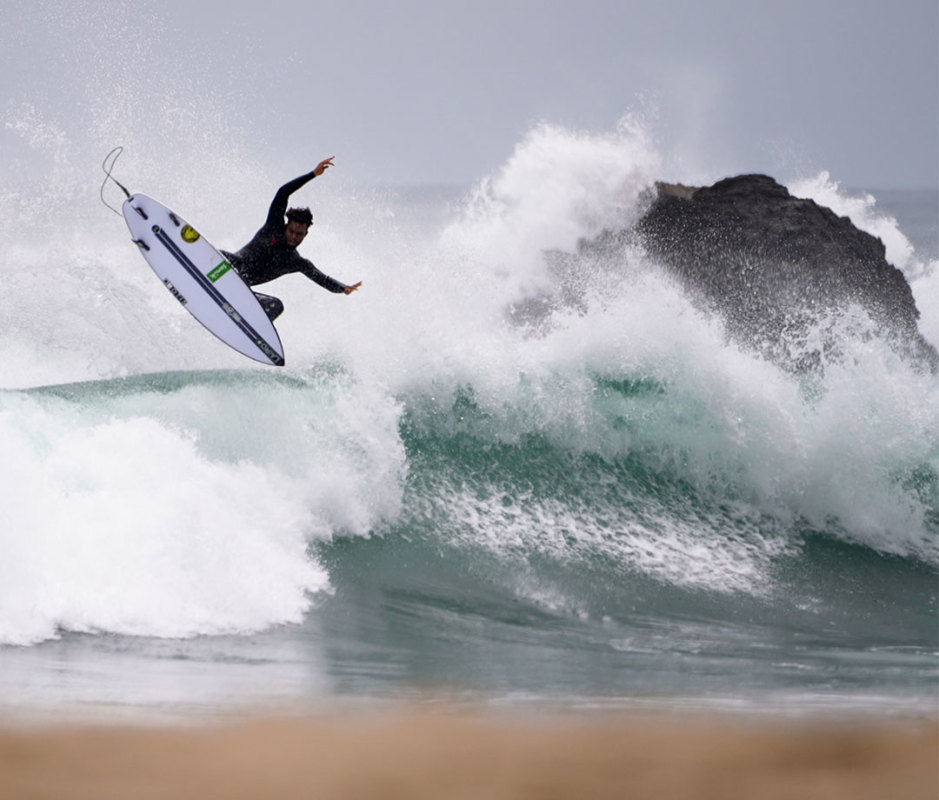
Courtesy picture
Step 3: Master Basic Surfing Moves
If you’re taking a lesson, your teacher will probably present you easy methods to paddle and pop up when you’re on the shore. Ahead, Morales shares his steps for each primary maneuvers. Note: you’ll spend extra time paddling than using waves—particularly at first—so half one here’s a key ability to grasp.
Paddling Instructions
- Lie on the board along with your toes to the tail.
- Keep your ft collectively always.
- Keep your torso, hips, and legs centered on the board.
- Slightly cup your hand whereas protecting all fingers shut collectively.
- Spear the water’s edge whereas pushing and reaching ahead.
- Pull your cupped hand again parallel to the rail of your board till your hand reaches your shoulder, making a sharp-bent elbow (rooster wing)—all whereas protecting your hand no deeper than half of your forearm’s depth underneath the floor.
- Start to push backwards towards the tail and downward till your full arm attain has been prolonged again.
- Flick your hand downward, attempting to go away the water you cupped behind you. Make positive you do not flick the water out of the water floor, however fairly preserve this motion underwater.
Pop-Up Instructions
- Lie on the middle of your board along with your toes to the tail along with your ft collectively.
- Arch your again along with your head up, wanting ahead.
- Put your arms flat on the highest deck of the board with the knuckle of your thumb touching the sting of your armpits. You do not wish to maintain the rails.
- Do a pushup and use your again foot to plant down above the fin plugs on the tail of your foam board.
- In the identical movement, raise your entrance foot and place it in between your two arms, mentioning your knee to your chest. Ultimately you wish to be standing along with your toes and chest dealing with the rail, whereas wanting up and ahead towards the course of the nostril. Note: Steps 4 and 5 occur on the similar time, creating the precise pop-up.
- Stabilize your self. Check in case your ft are aligned with the middle of the board, then bend your knees, however preserve your again straight for higher management and stability.
- Wherever you look is the place you are going. Start by wanting ahead, not down. Once you are extra comfy, seeking to the left or proper will make you start to show.
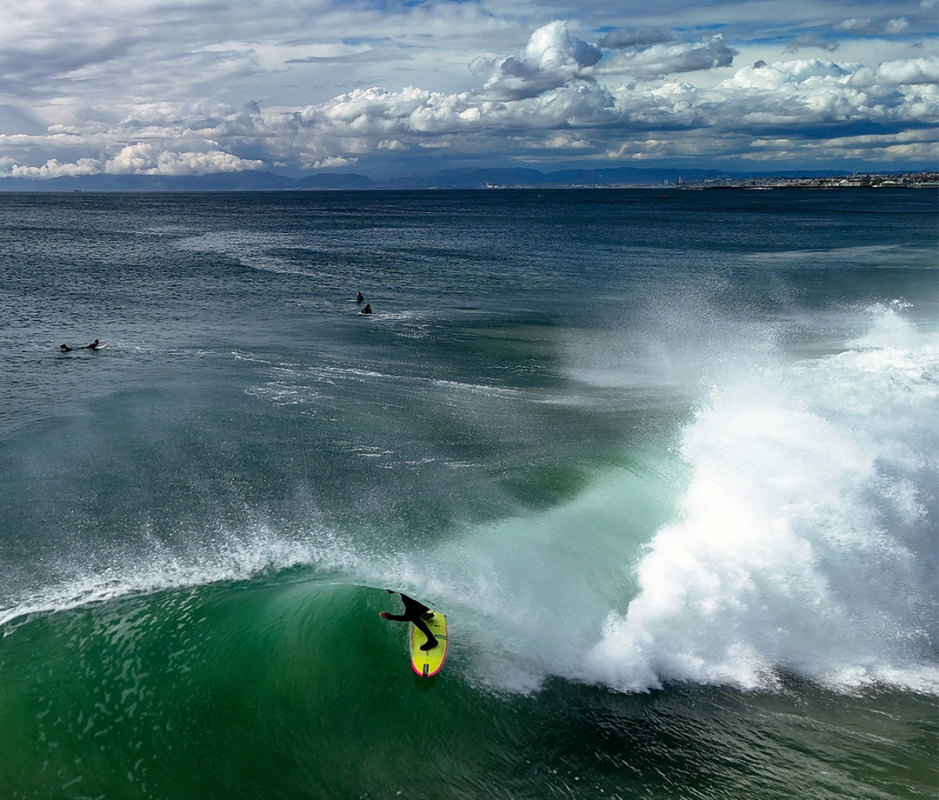
Courtesy picture
Step 4: Catch Your First Wave
You’ve graduated from browsing classes and are able to catch your first wave by yourself. It’s time to start placing every part collectively.
Gain confidence by catching whitewash, which is the wave that’s already damaged—principally the froth that may catapult you towards shore, Jones says. It’s softer, much less technical, and permits for extra repetition.
When you’re able to exit farther, start by watching the water. “Observe the waves and other surfers to understand the rhythm of the ocean,” Halstead says. While you’re doing this, you may stretch and apply wax to your board for higher grip.
Then, it’s showtime: Paddle out to the lineup, the place the waves start to interrupt. Face your board towards the shore if you see a wave approaching. When it’s your flip, paddle to match the velocity of the oncoming wave. Arch right into a “cobra position” to organize for the pop-up. Quickly pop to your ft, along with your dominant foot naturally touchdown in the back of the board.
Keep your arms up for stability and look within the course you wish to go. Pro tip: “Once you’re out in the water, identify a lineup marker like a house, palm tree, or lifeguard tower that’s on land,” Jones says. “Once you catch a wave, you can just paddle right back out and be like, ‘Okay, I’m in the right spot to catch the best waves that are coming in.’ ”
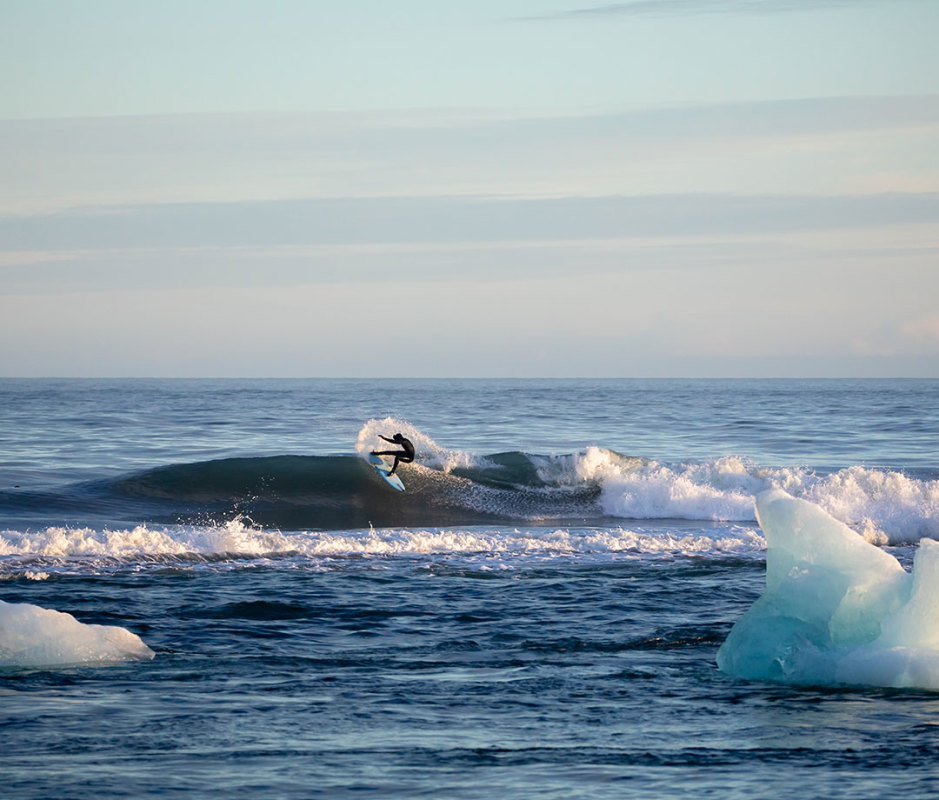
Courtesy picture
Step 5: Hone Your Technique
Looking to stage up from newbie to intermediate? “Get comfortable on a longboard before you switch to a shorter board,” advises Jones. “Eventually, you can start bringing a couple boards down to the beach with you to assess the conditions and choose the right one to ride.”
After you’re well-versed in catching waves, you may start experimenting with turns, Halstead provides. “Point your hands and turn your head to guide your turns.” You may start using the highest third of the wave to achieve higher management.
The finest tip of all for getting higher?
“Clock as much time as you can in the water,” Jones says. “Get out with friends who surf and who know more than you, or an actual trainer, and it’ll help build your skills.”
Best Surf Gear to Get Started
Odysea Log, 9 ft
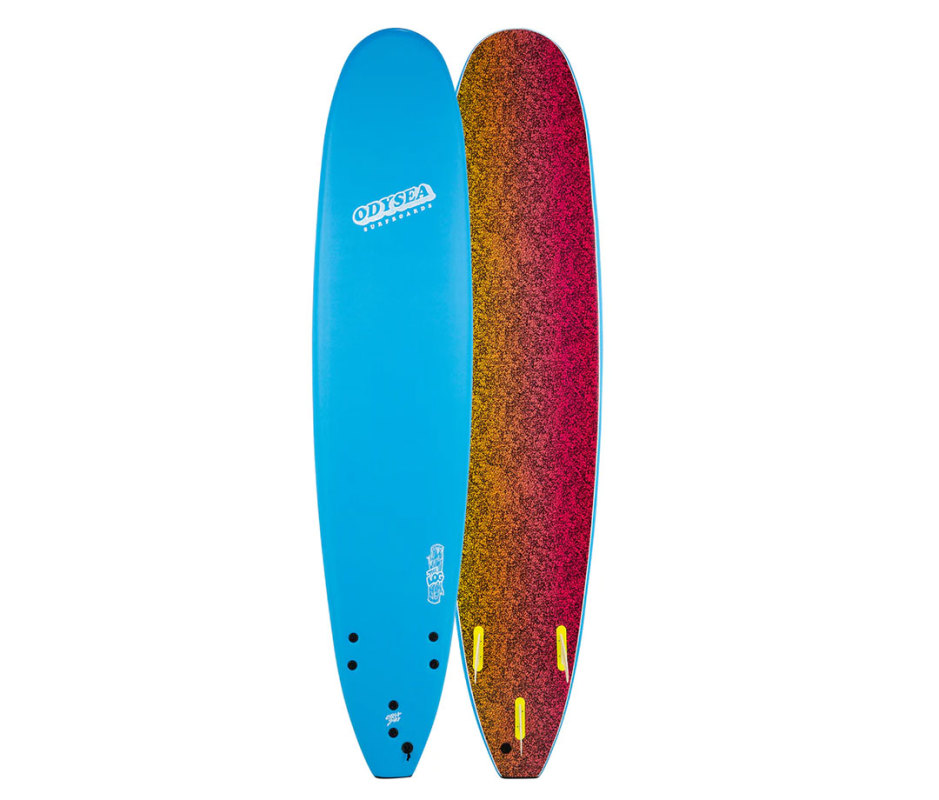
Courtesy picture
An enormous board is finest for newcomers. Odysea Log from Laguna, CA-based Catch Surf is supplied with sturdy rails and a barely extra outlined rocker (curvature on the backside of the board) for superior soft-top efficiency, Morales says. It’s additionally an excellent choose to assist stop nosediving within the waves on account of extra weight within the entrance of the board—most likely the greatest frustration for amateur surfers. The 8-foot mannequin works properly for many newcomers, however for a bit extra stability, go along with the Odysea 9-foot Log, designed by California surfers for riders of all ranges.
XCEL Comp 4/3mm Full Wetsuit
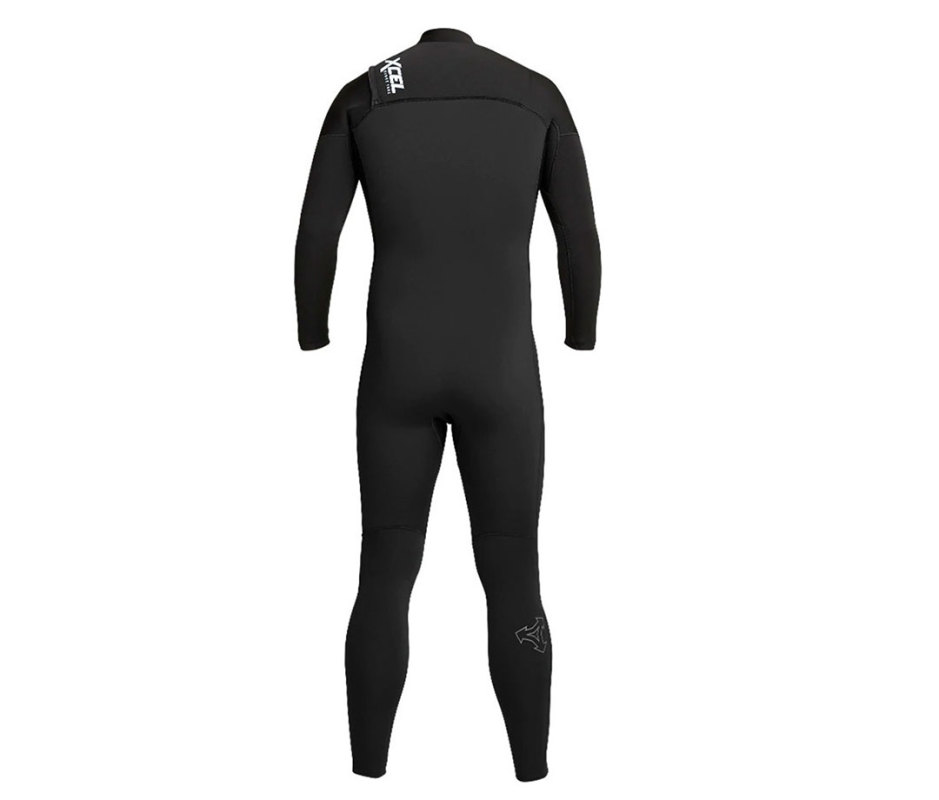
Courtesy picture
If the water is underneath 70 levels, you’ll desire a wetsuit to maintain the chilly from spoiling the enjoyable. XCEL Comp wetsuits are prized amongst high surfers for his or her sturdiness and luxury to maintain you heat for the complete season. XCEL’s Comp 4/3mm full wetsuit is the model’s lightest and stretchiest, strengthened with a Thermolite IR core and critically taped seams. Consult native surf outlets to get suggestions on appropriate wetsuit thickness for the realm you are in, suggests Morales. Remember, when attempting on a wetsuit, it’s supposed to suit tight to offer enough insulation from chilly water. Also, to get probably the most life out of your wetsuit, all the time totally rinse it afterwards with clear, contemporary water. After, cling it in a shaded space, turning it inside out to let either side utterly dry. “This will not only eliminate sand and salt, but most importantly prevent bacterial or fungal growth,” Morales says.
Creatures of Leisure Icon 9 Leash
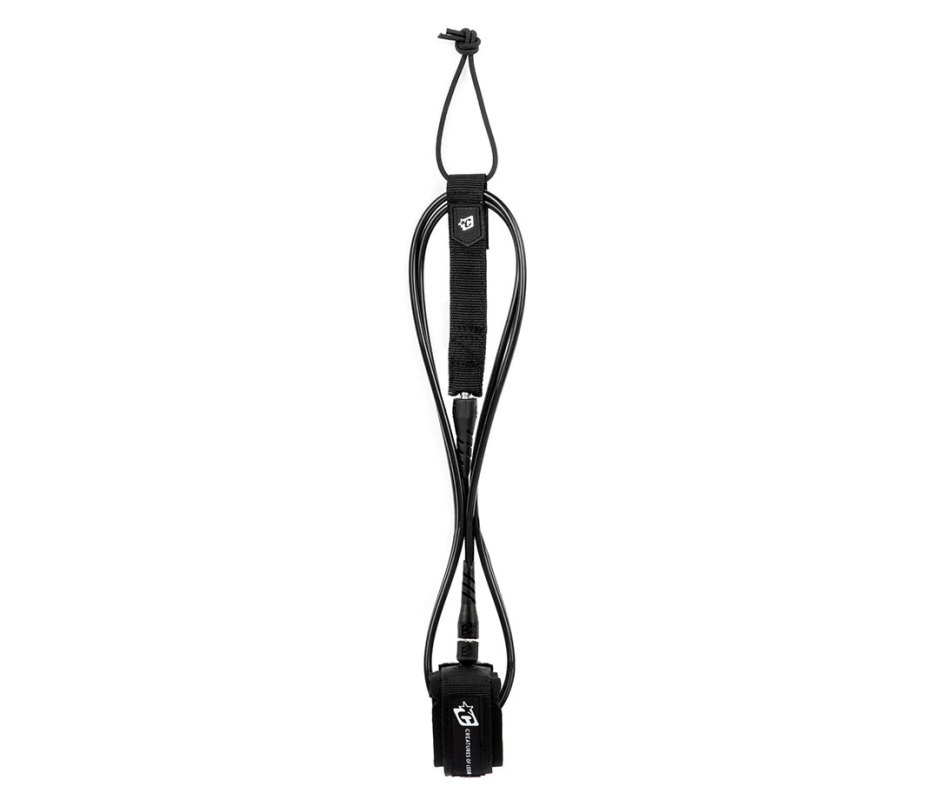
Courtesy picture
Almost any model of leash might be adequate for a starter. Oftentimes, surf outlets carry their very own line, so why not assist assist a small native enterprise by buying one among theirs? Morales’ go-to leash from Creatures of Leisure is simple and designed for small to medium waves. Make positive to match your leash in line with board size. A 9-foot leash, for instance, goes with a 9-foot board.
Everyday California Reef-Safe Continuous Spray Sunscreen
(*5*)
Courtesy picture
Protect your pores and skin—and the underwater creatures sharing your fragile playground—with a dependable (and accountable) sunscreen. Halstead recommends the mineral, reef-safe sunscreen from Everyday California. This water resistant product sprays on with a non-aerosol mist and is formulated with substances which can be protected for endangered coral reefs.
Sticky Bumps’ Custom 6-Pack Surf Wax
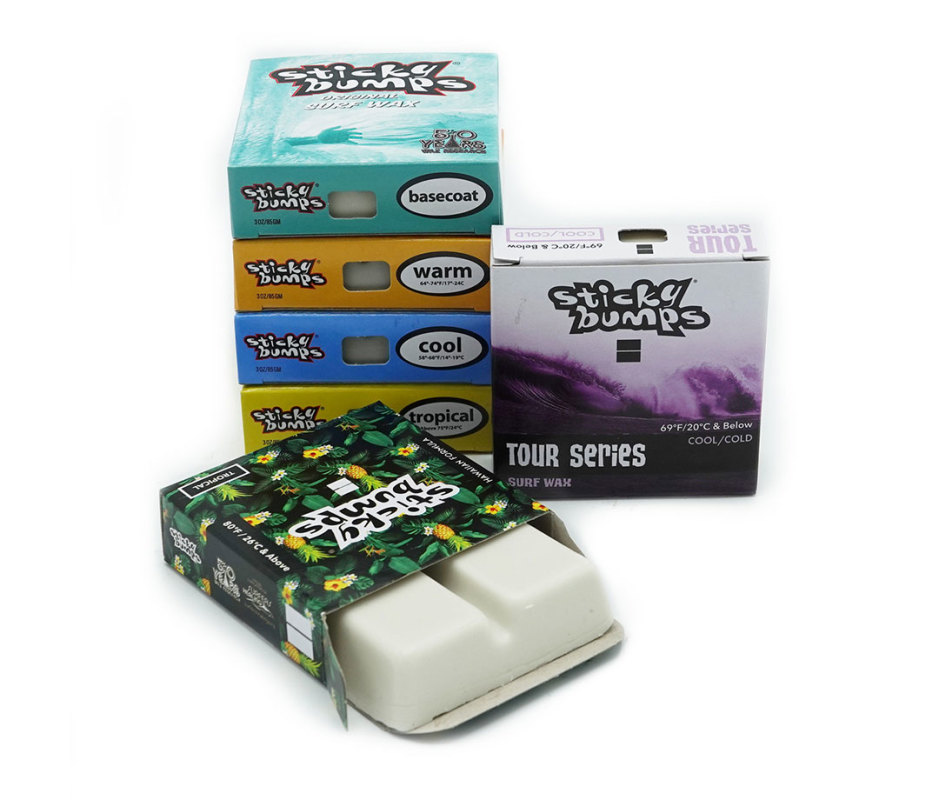
Courtesy picture
Surf wax is a should for each newbie as a result of it supplies traction and grip that will help you keep planted in your board. Surfers are likely to gravitate towards their favourite kind of surf wax. Jones’ favorites are from Sticky Bumps, which cater to a variety of browsing circumstances and work properly when browsing waves that require strolling on slippery rocks. “I always wax the top of my feet,” he advises. “While in the water, you can rub one foot on top of the other, creating extra grip and removing any dirt or dust from your feet.”
Pro tip: Know the water temp or circumstances the place you’re browsing, as a result of surf wax has various ranges of stickiness to correlate with totally different temperatures. Sticky Bumps’ customized 6-pack enables you to combine and match accordingly.

